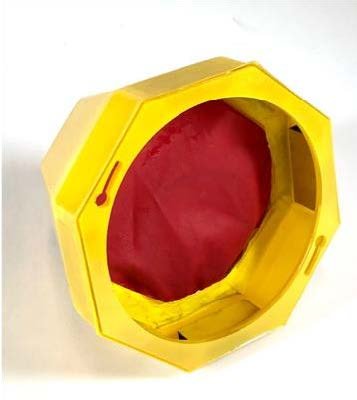A mechanic citrus press
Bachelor Industrial Design Engineering 2019
This was a project I did in my first year of the bachelor of Industrial Design Engineering. It was part of the module* ‘realisation’, the goal of the project, therefore, was to take a concept and develop that further into a fully functioning prototype and mass production plan. In this instance, the concepts were from a previous project, in which we had to design a mechanical kitchen device; whisk, citrus press, or pasta machine. At the start of the project, we collectively chose to work on the concept of a mechanical citrus press that my groupmate Floor Stefess created.
* A module is a quarter of the college year and lasts for ~10 weeks
The concept that she had created was a manual citrus press that could be used in the kitchen, but also on the go, or in the office. This press, on the outside, resembled an orange, but with an angular design. On the inside, a system revolving around planetary gears made it possible for an orange to be squeezed when placed inside the press. To produce juice, the orange half would be placed inside. Then by turning the lid, the cone inside the orange is turned, producing the orange juice. This juice is then collected inside the press in a cup, which can then be taken out and drunk from.
The first part of this project involved us focusing on producing a functional, on-scale model of this design in the workshop. This meant that we had to test and adapt the design for functionality and then create clear and concise workshop plans, as the allotted time in the workshop was limited. To the left, the final workshop model can be seen. With this model, user tests were carried out, which proved the functionality of the concept. Unfortunately, one of our test subjects managed to destroy our model, which gave us insights into points of improvement.
The second part of this project focuses on production, more specifically, mass production. The goal was to redesign the fully functioning model of our concept into a design that could be mass-produced. For this, we had to create 3D models of all parts, create mold designs for parts that would need to be injection moulded and work out all the logistics, like assembly plans, material selection, and cost calculations.
Exploded view of the workshop model
Exploded view of the mass production design
This project was in collaboration with; Djen Toorenburgh, Floor Stefess, Joëlle Steendam, Joris Pape, Laura van der Werf, Marjolein Dekker, and Pim de Smit.







